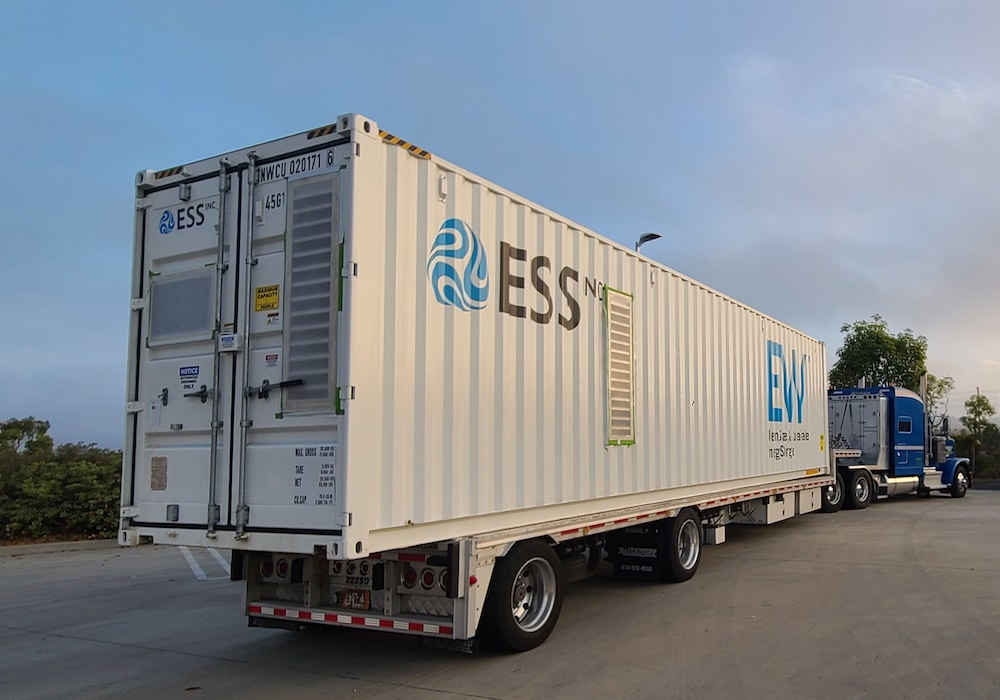By Eric Dresselhuys, CEO
2022 has been an eventful year for the clean energy industry. Russia’s invasion of Ukraine, and associated energy price shocks, triggered a renewed focus on the importance of energy security. Meanwhile, passage of major legislation in the United States and supportive policies globally will provide historic levels of funding for clean energy and energy storage in coming years. While there are many challenges to overcome and much work to be done, these developments give reason to be optimistic about the long-term prospects for a clean, secure energy future as we head into 2023.
In early 2022, Russia’s invasion of Ukraine refocused the world on the importance of energy security. Historically, oil has driven energy security conversations in the West. But, as we transition away from fossil fuels, we now run the risk of turning critical minerals into the new oil, given their importance to many clean energy technologies and the narrow supply chains that deliver them. That’s one of the reasons ESS has focused on the development of iron flow battery technology: our raw materials are widely available, and over 80% of the materials we source for our Wilsonville, Oregon manufacturing facility are sourced from the United States.
On the policy front, the Inflation Reduction Act (IRA) was a game changing piece of legislation in the United States. Its significant, long-term incentives for clean energy and energy storage will drive domestic deployment of these technologies for years to come. The legislation re-establishes American leadership in clean energy technology, boosting both deployment and domestic manufacturing. For energy storage specifically, the new standalone Investment Tax Credit (ITC) will drive the scaling up of the energy storage industry much as previous tax credits for wind and solar enabled the scaling and commercialization of those technologies.
While the IRA lays the foundation for long-term success of the clean energy and energy storage industries broadly, ESS saw some notable achievements and developments in 2022 which underscore our leading position in the LDES market and lay the groundwork for the expanded deployment of our iron flow battery technology in 2023 and beyond.
This year, we were excited to enter into agreements with multiple major customers. Leading utilities such as the Sacramento Municipal Utility District (SMUD), Portland General Electric, Tampa Electric Company, Consumers Energy, and Burbank Water and Power saw the value in ESS technology and placed orders for ESS systems with initial deliveries already underway. We look forward to working with our customers to deliver iron flow battery systems that will provide clean, resilient and affordable energy 24/7.
We were also honored to host Secretary Jennifer M. Granholm of the U.S. Department of Energy, U.S. Senators Ron Wyden (D-OR) and Jeff Merkley (D-OR) and Oregon Governor Kate Brown for a tour of our Wilsonville facility in August. We are grateful for the support and leadership of our elected and appointed officials and their commitment to building the clean energy future.
Interest in ESS technology is not restricted to the United States. In 2022, we also entered our first major international partnership, with Energy Storage Industries Asia Pacific (ESI), to distribute iron flow batteries in Australia, New Zealand and Oceania as demand for LDES grows worldwide. Under the terms of the agreement, ESS will supply a combination of completed systems and core components to support up to 12 GWh of iron flow battery storage down under.
As we look ahead to 2023, I look forward to building on these achievements as we scale up to deploy the energy storage solutions our customers need. Our team has grown significantly, including key leadership additions in operations, delivery and finance. Over the coming year, we will continue to build on our innovation and successes to deliver the safe, sustainable solutions that will enable renewable energy, support secure, resilient energy systems and catalyze the clean energy future.

